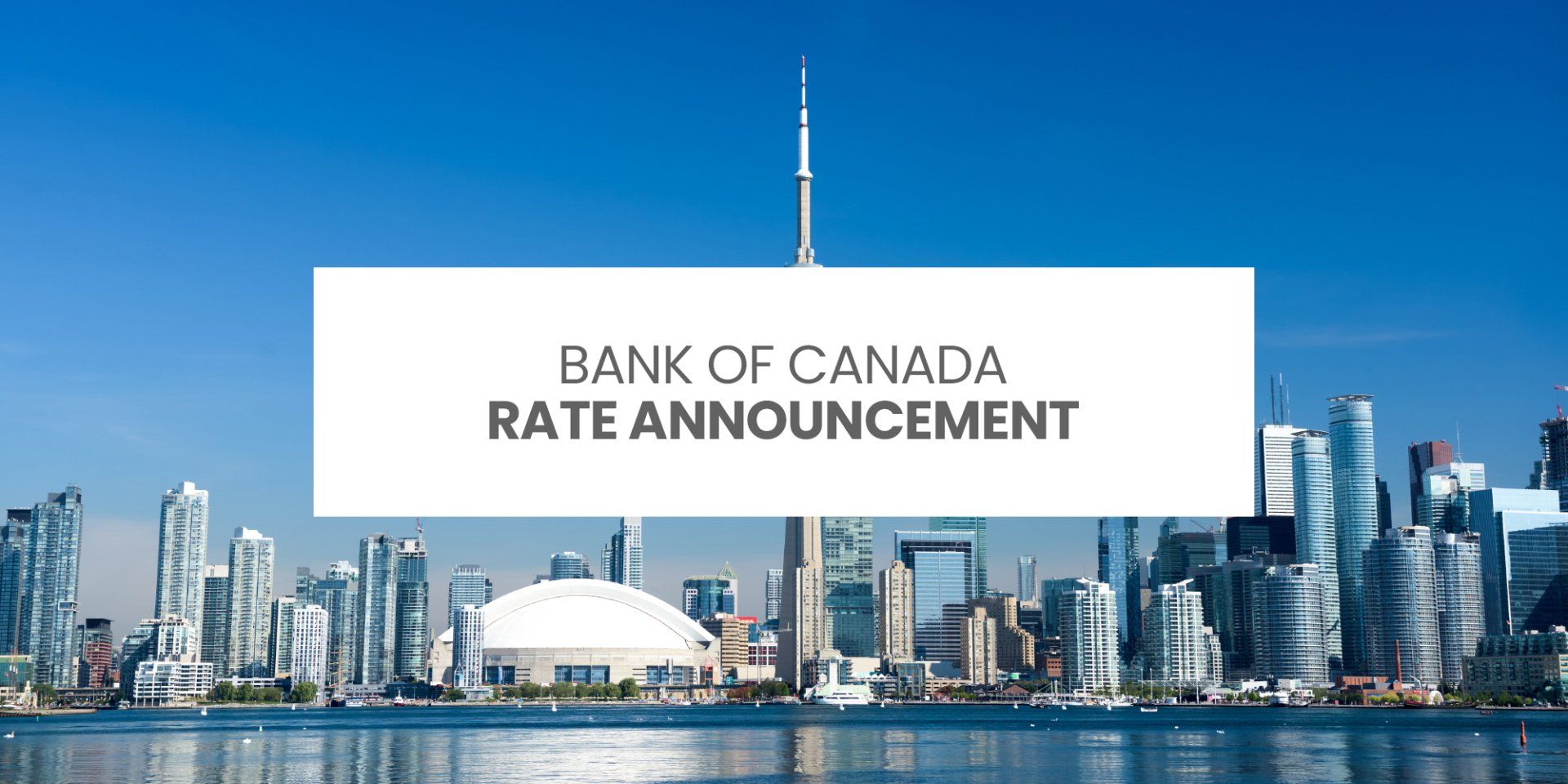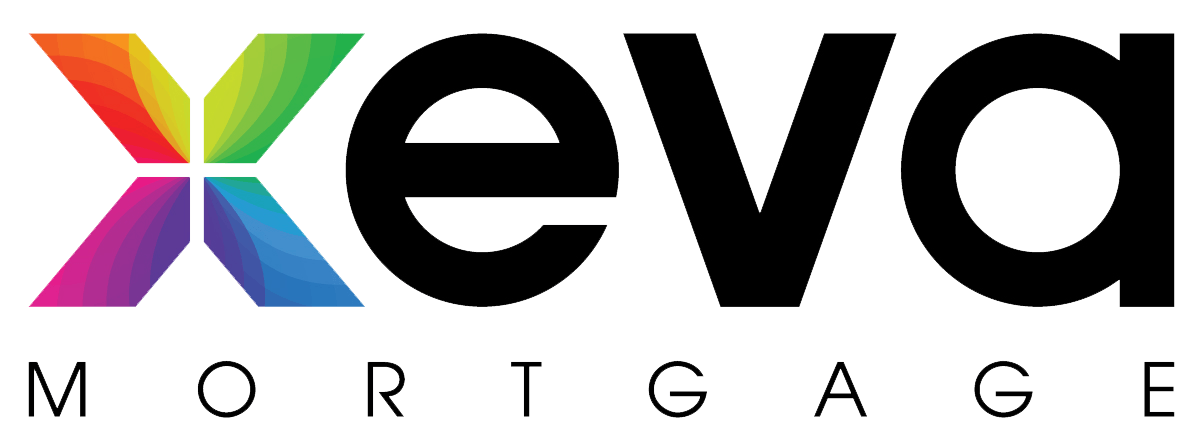Are Interest Rates Going Up and Down at the Same Time? COVID-19
Andrew Homeyer • April 7, 2020

If you’re paying more attention to the Canadian economy due to COVID-19, and it seems like you’re getting mixed messages; that mortgage interest rates are going both up and down at the same time, you’re not that far off. There are a lot of moving parts, and to find clarity, we need to make sure we’re comparing apples to apples, and oranges to oranges.
Let’s begin by acknowledging that not all interest rates are the same. The term “interest rates” can mean a lot of different things in news story headlines.
The Government “overnight rate” is different from the “qualifying rate”, which is different from the banks “prime rate”, which is different from “variable rates”, which is different from the “discount on a variable rate” which is different from “fixed rates”.
Here’s a list of the different types of mortgage rates, a quick summary of what they are, the direction they’re going, and how they impact you.
Target for the Overnight Rate.
Also known as the policy rate, this is the rate that the Bank of Canada (The Government) controls. When the Bank of Canada changes the Target for the Overnight Rate, this change affects other interest rates in the economy.
Typically there are only eight days in the year for the Bank of Canada to announce if they will change the rate. However, given the recent COVID-19, the Bank of Canada has made special announcements.
The overnight rate was set with a target of 1.75% for a long time before the pandemic.
March 4th 2020, the rate was lowered to 1.25%. March 16th 2020, the rate was lowered to 0.75% in an emergency rate cut. March 27th 2020, the rate was lowered to 0.25% in a second emergency rate cut.
The overnight rate now sits at 0.25% with April 15th 2020, as the next scheduled announcement date.
By cutting interest rates, the government hopes to stimulate economic growth. Lower financing costs encourages borrowing and investing, which is what our government believes will get us through this pandemic.
Qualifying Rate
Also known as the Benchmark Qualifying Rate or the five year qualifying posted rate, this is another rate set by the government. If you’re getting an insured mortgage, the government wants to make sure you will be able to afford your mortgage at the end of your term (in case interest rates go up). So they make you qualify for your mortgage at a higher rate than you will actually be paying.
The government has recently dropped the qualifying rate from 5.19% to 5.04%. This decrease, like the drop in the overnight rate, is meant to help stimulate the economy. The average Canadian will qualify to borrow an additional $10,000 with this drop.
Banks Prime Rate
The banks prime lending rate isn’t the same as the overnight rate; however, the banks prime lending rate is impacted by the overnight rate. Each bank sets its own prime lending rate. When the Bank of Canada moves the overnight rate, typically the prime rate at each bank will follow.
Because of the emergency rate cut on March 27th, banks lowered their prime lending rate to 2.45%. Some banks moved immediately, while some made the change effective April 1st, which means the savings will be seen on May 1st, but they all did lower their prime rates.
The prime lending rate is used by banks to determine rates on floating mortgage products (like the variable rate), lines of credit, home equity lines of credit (HELOC), and some credit cards.
If you currently have a variable rate mortgage or a HELOC, a lower prime rate means that you are now paying less interest on your existing mortgage, this is a good thing.
Variable Rate Mortgage
A variable rate mortgage is a mortgage that fluctuates with the prime lending rate. Typically, the mortgage rate will change with the prime lending rate and includes a “component” or “discount” to the prime rate +/- a specified amount, such as Prime - 0.45%. The lender sets this component to prime.
So, if you have a variable rate mortgage at Prime -0.45%, the rate you’d be paying today (with a prime rate of 2.45%) is 2%.
This is where it gets a little confusing because while the government is trying to stimulate the economy by lowering the overnight rate, banks have followed by lowering their prime rate, but at the same time have increased the component to prime - by the same amount of 0.5% or in some cases even more.
Although there are immediate savings for existing variable rate mortgage holders, anyone looking to get a new variable rate mortgage will do so at a higher rate than a few weeks ago.
Fixed Rate Mortgage
As its name suggests, a fixed rate mortgage is where your mortgage rate stays the same throughout your term. Your rate isn’t tied to the prime lending rate but rather is unmoved by outside factors. With all the uncertainty in the Canadian economy, lenders have actually been increasing rates for new fixed rate mortgages.
So while the government is doing all they can to keep rates low, why are banks increasing fixed rate mortgages?
Well, banks are in the business of making money, and given that over 2 million Canadians have applied for some kind of assistance to get through COVID-19, the fear is that mortgage delinquency will go up considerably as the coronavirus financially impacts people.
Banks are increasing fixed rates to protect themselves against economic uncertainty.
So what does this mean for you? Well, as everyone’s financial situation is different, it’s impossible to give blanket advice that applies to everyone. But here is some general advice.
Existing Variable Rate Holders
You’re doing well. The recent drop in the banks prime rate to 2.45% has lowered the amount of interest you are paying on your mortgage. You have a discount to prime for the remainder of your term that isn’t currently available in the market. Your mortgage rate is one of the lowest in Canadian history.
As the next announcement by the government will be April 15th 2020, there is a chance your rate could go even lower.
If at this time, you’re considering locking your variable rate into a fixed rate, that would significantly increase the amount of interest you are paying. As fixed rates have increased over the last weeks, this isn’t a good option right now.
The reason you went variable in the first place is the reason you should stay variable at this point. With all the economic uncertainty, the prime rate won’t be going up anytime soon.
Existing Fixed Rate Mortgage Holders
Your fixed rate is set lower than the fixed rates currently being offered. If you break your term now, you will incur a higher penalty. So unless you must make a move, it would probably be best just to stay the course.
Hopefully, fixed rates will go down when the economic uncertainty winds down, and rates will be in a good spot when your term comes up for renewal.
Are you looking for a new mortgage?
The most important thing for you going forward is flexibility. Variable rates are still historically low, and although fixed rate mortgages have gone up over the last weeks, there are still lots of great mortgage options available on the market.
The best place to start is to contact me directly so we can go over your financial situation and discuss the best plan for you to move ahead in these uncertain times.
So although it may appear that mortgage interest rates are going both up and down at the same time, understanding what is meant by “interest rates” is crucial. The government is lowering rates to stimulate the economy, while banks are trying to protect themselves against future losses by increasing rates while they can.
RECENT POSTS

Bank of Canada increases policy interest rate by 50 basis points, continues quantitative tightening. FOR IMMEDIATE RELEASE Media Relations Ottawa, Ontario October 26, 2022 The Bank of Canada today increased its target for the overnight rate to 3¾%, with the Bank Rate at 4% and the deposit rate at 3¾%. The Bank is also continuing its policy of quantitative tightening. Inflation around the world remains high and broadly based. This reflects the strength of the global recovery from the pandemic, a series of global supply disruptions, and elevated commodity prices, particularly for energy, which have been pushed up by Russia’s attack on Ukraine. The strength of the US dollar is adding to inflationary pressures in many countries. Tighter monetary policies aimed at controlling inflation are weighing on economic activity around the world. As economies slow and supply disruptions ease, global inflation is expected to come down. In the United States, labour markets remain very tight even as restrictive financial conditions are slowing economic activity. The Bank projects no growth in the US economy through most of next year. In the euro area, the economy is forecast to contract in the quarters ahead, largely due to acute energy shortages. China’s economy appears to have picked up after the recent round of pandemic lockdowns, although ongoing challenges related to its property market will continue to weigh on growth. Overall, the Bank projects that global growth will slow from 3% in 2022 to about 1½% in 2023, and then pick back up to roughly 2½% in 2024. This is a slower pace of growth than was projected in the Bank’s July Monetary Policy Report (MPR). In Canada, the economy continues to operate in excess demand and labour markets remain tight. The demand for goods and services is still running ahead of the economy’s ability to supply them, putting upward pressure on domestic inflation. Businesses continue to report widespread labour shortages and, with the full reopening of the economy, strong demand has led to a sharp rise in the price of services. The effects of recent policy rate increases by the Bank are becoming evident in interest-sensitive areas of the economy: housing activity has retreated sharply, and spending by households and businesses is softening. Also, the slowdown in international demand is beginning to weigh on exports. Economic growth is expected to stall through the end of this year and the first half of next year as the effects of higher interest rates spread through the economy. The Bank projects GDP growth will slow from 3¼% this year to just under 1% next year and 2% in 2024. In the last three months, CPI inflation has declined from 8.1% to 6.9%, primarily due to a fall in gasoline prices. However, price pressures remain broadly based, with two-thirds of CPI components increasing more than 5% over the past year. The Bank’s preferred measures of core inflation are not yet showing meaningful evidence that underlying price pressures are easing. Near-term inflation expectations remain high, increasing the risk that elevated inflation becomes entrenched. The Bank expects CPI inflation to ease as higher interest rates help rebalance demand and supply, price pressures from global supply disruptions fade, and the past effects of higher commodity prices dissipate. CPI inflation is projected to move down to about 3% by the end of 2023, and then return to the 2% target by the end of 2024. Given elevated inflation and inflation expectations, as well as ongoing demand pressures in the economy, the Governing Council expects that the policy interest rate will need to rise further. Future rate increases will be influenced by our assessments of how tighter monetary policy is working to slow demand, how supply challenges are resolving, and how inflation and inflation expectations are responding. Quantitative tightening is complementing increases in the policy rate. We are resolute in our commitment to restore price stability for Canadians and will continue to take action as required to achieve the 2% inflation target. Information note The next scheduled date for announcing the overnight rate target is December 7, 2022. The Bank will publish its next full outlook for the economy and inflation, including risks to the projection, in the MPR on January 25, 2023. View the October 2022 Monetary Policy Report

Bank of Canada increases policy interest rate by 75 basis points, continues quantitative tightening. FOR IMMEDIATE RELEASE Media Relations Ottawa, Ontario September 7, 2022 The Bank of Canada today increased its target for the overnight rate to 3¼%, with the Bank Rate at 3½% and the deposit rate at 3¼%. The Bank is also continuing its policy of quantitative tightening. The global and Canadian economies are evolving broadly in line with the Bank’s July projection. The effects of COVID-19 outbreaks, ongoing supply disruptions, and the war in Ukraine continue to dampen growth and boost prices. Global inflation remains high and measures of core inflation are moving up in most countries. In response, central banks around the world continue to tighten monetary policy. Economic activity in the United States has moderated, although the US labour market remains tight. China is facing ongoing challenges from COVID shutdowns. Commodity prices have been volatile: oil, wheat and lumber prices have moderated while natural gas prices have risen. In Canada, CPI inflation eased in July to 7.6% from 8.1% because of a drop in gasoline prices. However, inflation excluding gasoline increased and data indicate a further broadening of price pressures, particularly in services. The Bank’s core measures of inflation continued to move up, ranging from 5% to 5.5% in July. Surveys suggest that short-term inflation expectations remain high. The longer this continues, the greater the risk that elevated inflation becomes entrenched. The Canadian economy continues to operate in excess demand and labour markets remain tight. Canada’s GDP grew by 3.3% in the second quarter. While this was somewhat weaker than the Bank had projected, indicators of domestic demand were very strong – consumption grew by about 9½% and business investment was up by close to 12%. With higher mortgage rates, the housing market is pulling back as anticipated, following unsustainable growth during the pandemic. The Bank continues to expect the economy to moderate in the second half of this year, as global demand weakens and tighter monetary policy here in Canada begins to bring demand more in line with supply. Given the outlook for inflation, the Governing Council still judges that the policy interest rate will need to rise further. Quantitative tightening is complementing increases in the policy rate. As the effects of tighter monetary policy work through the economy, we will be assessing how much higher interest rates need to go to return inflation to target. The Governing Council remains resolute in its commitment to price stability and will continue to take action as required to achieve the 2% inflation target. INFORMATION NOTE The next scheduled date for announcing the overnight rate target is October 26, 2022. The Bank will publish its next full outlook for the economy and inflation, including risks to the projection, in the MPR at the same time.

Bank of Canada increases policy interest rate by 100 basis points, continues quantitative tightening. FOR IMMEDIATE RELEASE Media Relations Ottawa, Ontario July 13, 2022 The Bank of Canada today increased its target for the overnight rate to 2½%, with the Bank Rate at 2¾% and the deposit rate at 2½%. The Bank is also continuing its policy of quantitative tightening (QT). Inflation in Canada is higher and more persistent than the Bank expected in its April Monetary Policy Report (MPR), and will likely remain around 8% in the next few months. While global factors such as the war in Ukraine and ongoing supply disruptions have been the biggest drivers, domestic price pressures from excess demand are becoming more prominent. More than half of the components that make up the CPI are now rising by more than 5%. With this broadening of price pressures, the Bank’s core measures of inflation have moved up to between 3.9% and 5.4%. Also, surveys indicate more consumers and businesses are expecting inflation to be higher for longer, raising the risk that elevated inflation becomes entrenched in price- and wage-setting. If that occurs, the economic cost of restoring price stability will be higher. Global inflation is higher, reflecting the impact of the Russian invasion of Ukraine, ongoing supply constraints, and strong demand. Many central banks are tightening monetary policy to combat inflation, and the resulting tighter financial conditions are moderating economic growth. In the United States, high inflation and rising interest rates are contributing to a slowdown in domestic demand. China’s economy is being held back by waves of restrictive measures to contain COVID-19 outbreaks. Oil prices remain high and volatile. The Bank now expects global economic growth to slow to about 3½% this year and 2% in 2023 before strengthening to 3% in 2024. Further excess demand has built up in the Canadian economy. Labour markets are tight with a record low unemployment rate, widespread labour shortages, and increasing wage pressures. With strong demand, businesses are passing on higher input and labour costs by raising prices. Consumption is robust, led by a rebound in spending on hard-to-distance services. Business investment is solid and exports are being boosted by elevated commodity prices. The Bank estimates that GDP grew by about 4% in the second quarter. Growth is expected to slow to about 2% in the third quarter as consumption growth moderates and housing market activity pulls back following unsustainable strength during the pandemic. The Bank expects Canada’s economy to grow by 3½% in 2022, 1¾% in 2023, and 2½% in 2024. Economic activity will slow as global growth moderates and tighter monetary policy works its way through the economy. This, combined with the resolution of supply disruptions, will bring demand and supply back into balance and alleviate inflationary pressures. Global energy prices are also projected to decline. The July outlook has inflation starting to come back down later this year, easing to about 3% by the end of next year and returning to the 2% target by the end of 2024. With the economy clearly in excess demand, inflation high and broadening, and more businesses and consumers expecting high inflation to persist for longer, the Governing Council decided to front-load the path to higher interest rates by raising the policy rate by 100 basis points today. The Governing Council continues to judge that interest rates will need to rise further, and the pace of increases will be guided by the Bank’s ongoing assessment of the economy and inflation. Quantitative tightening continues and is complementing increases in the policy interest rate. The Governing Council is resolute in its commitment to price stability and will continue to take action as required to achieve the 2% inflation target. Information note The next scheduled date for announcing the overnight rate target is September 7, 2022. The Bank will publish its next full outlook for the economy and inflation, including risks to the projection, in the MPR on October 26, 2022.









